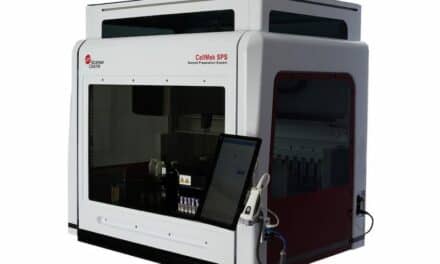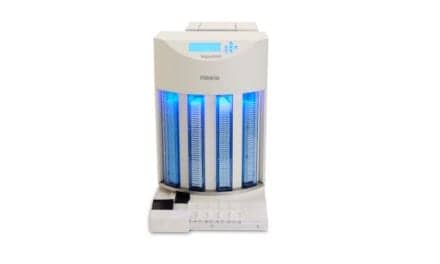Summary
Compact flow cytometers are evolving, becoming smaller and smarter. They offer potential benefits for clinical labs with limited space or specific workflows. This article explores advancements in automation, multi-parametric analysis, and integration with Laboratory Information Systems, while assessing performance trade-offs, maintenance needs, and applications like minimal residual disease detection.
Key Takeaways
- Recent updates in flow cytometry technology make compact devices more viable for clinical settings.
- Developments include automation, enhanced multi-parametric analysis, and LIS integration.
- Performance and maintenance considerations remain crucial for labs with limited space.
- Applications such as minimal residual disease detection are gaining traction.
Flow cytometers are becoming increasingly compact and sophisticated, offering opportunities and challenges for routine clinical use. Recent advances focus on unit size reduction, enhanced user-friendliness, and smart features that automate and streamline operations. These changes are particularly relevant for clinical labs operating within tight spatial constraints or managing specialized workflows.
One area of advancement is the automation of flow cytometry processes. Automated sample handling improves throughput and minimizes human error. Compact flow cytometers now come with built-in capabilities for automated sample preparation and data analysis, reducing the labor-intensive tasks traditionally associated with these devices. The increased automation facilitates more consistent results and makes it easier for labs to train staff on their use, saving time and resources.
Multi-parametric analysis is another critical area of improvement seen in modern flow cytometers. This capability allows users to analyze multiple biomarkers simultaneously, providing a broader and more detailed profile of the samples. Enhanced multi-parametric capability is particularly beneficial for clinical diagnostics, where detailed cellular information is critical for accurate diagnosis and treatment planning. Newer compact models can now support up to several dozen parameters, offering comprehensive insights without needing larger, cumbersome equipment.
Integration and Performance Considerations
The integration of flow cytometers with Laboratory Information Systems (LIS) is an area gaining momentum, as it enhances data management capabilities and improves workflow efficiency. By seamlessly linking with LIS, these devices facilitate better data accessibility and accuracy, enabling clinical technicians to quickly cross-reference results with patient records and historical data. This integration is particularly advantageous for institutions aiming for scalable systems adaptable to evolving technological landscapes.
Despite the promising developments, compact flow cytometers come with limitations that clinical labs must consider. They often present trade-offs in terms of performance, such as reduced sensitivity or throughput compared to larger, established systems. Small form factors may also necessitate more frequent maintenance, requiring labs to balance the convenience of these devices with their upkeep needs. This balance is crucial in labs with limited personnel or maintenance budgets.
Emerging applications like Minimal Residual Disease (MRD) detection in hematologic malignancies highlight the potential for compact flow cytometers in clinical labs. MRD offers insights into the effectiveness of treatment plans and helps in monitoring relapse, making it a critical application for laboratories focused on precision medicine. While compact systems show promise in this area, their adaptation for such highly specialized diagnostics requires rigorous validation to ensure accuracy comparable to traditional systems.
As compact flow cytometers evolve, their potential for routine clinical use continues to grow. By keeping abreast of technological updates, clinical laboratory technicians can better align their operational capacities with advancements in flow cytometry, ensuring improved patient care and diagnostic accuracy while meeting space and budgetary constraints.





